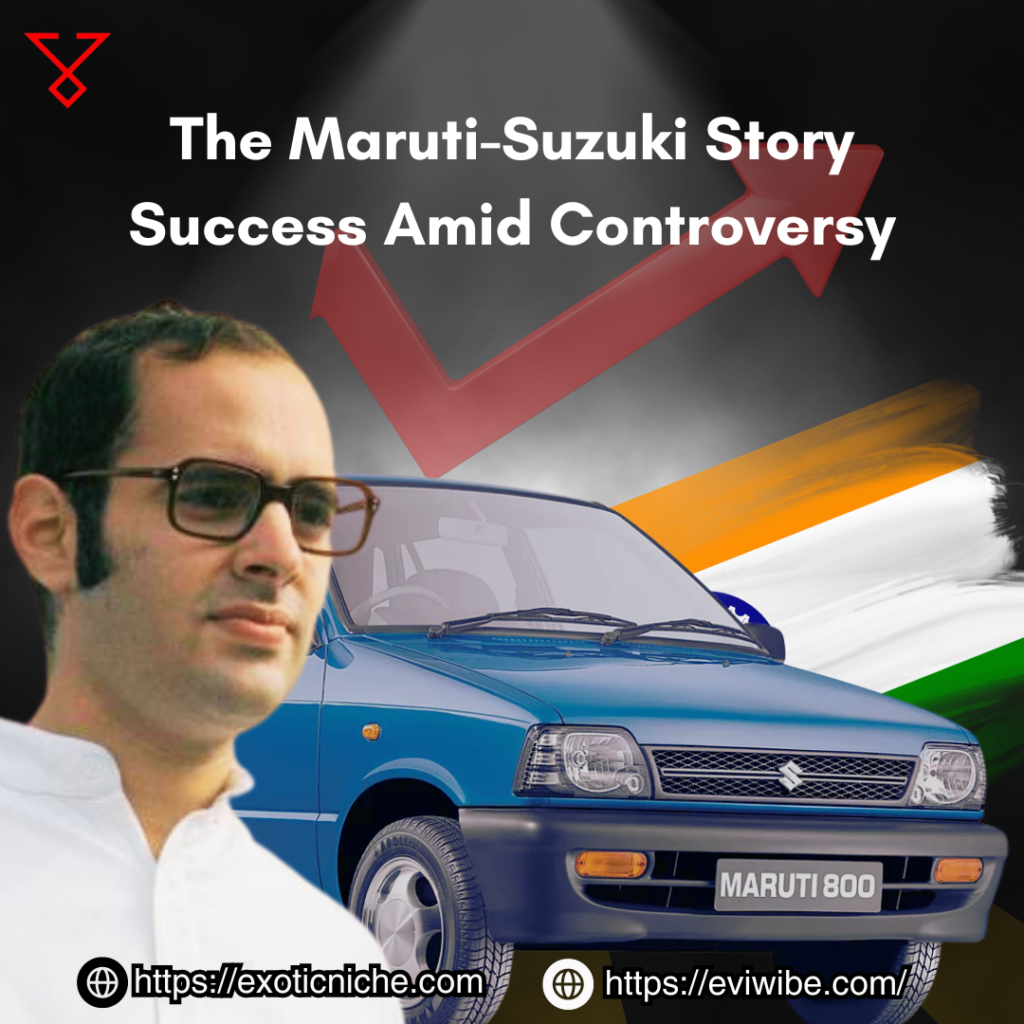Maruti-Suzuki was today’s largest car company in India. It had a rather interesting and inspiring story. The company is infamous for producing some of the least safe vehicles in terms of crash test ratings. Maruti-Suzuki dominates the Indian car market. From complete rejection to eventually becoming the dream project of Sanjay Gandhi, the journey transforms. Let’s find out in detail.
The Birth of Maruti: A Dream for the People
Economic Condition of India in the 1960s and early 1970s: India was facing a grave economic crisis, especially in the aftermath of the Indo-Pak war in 1965 and the Indo-China war in 1967. Inflation was soaring high, and even basic necessities were no more accessible to a vast number of people. Meanwhile, the industrialization process was picking up pace in the international scenario, and the car industry booming strongly.
India, however, was not to experience this automobile revolution. Imported cars were just too costly for the Indian common man. Sensing this, then Prime Minister Indira Gandhi had a dream of an affordable, Indian car for the masses. The result of this dream was the “People’s Car Project,” which led to the formation of Maruti Limited on 16th November 1970.
Sanjay Gandhi’s Vision
Son of the Prime Minister, Indira Gandhi, Sanjay Gandhi played the maximum role in the early years of Maruti. He had a deep interest in automobiles and, for that purpose, trained at Rolls Royce in Crewe, England. At that time, he wanted to make a car for the common Indian man, but things didn’t work out accordingly. Marred by severe economic crises like famine and inflation, and the impact of the Bangladesh Liberation War, his dream of a “People’s Car” was turned into a distant dream.
Maruti had rung several attempts at it, attempting to work with international brands such as Volkswagen. However, things only worsened when the Emergency was declared by the Indian government in 1975. Sanjay Gandhi began to get deeply into politics, which meant less time on the car project and little hopeful future for Maruti.

A New Beginning After the Emergency
The fortunes of the company took a downturn after the Emergency was lifted in 1977. Congress lost the elections, and with the Janata Party coming to power, the company was closed. But the dream did not die. In 1980, Indira Gandhi was back to power, and there was life in Maruti again.
Sanjay Gandhi’s untimely death in a plane crash in 1980 didn’t mean the end for Maruti. Dr. V. Krishnamurthy, often referred to as the father of the Indian public sector, stepped in. And signed a joint venture agreement with Suzuki, marking the beginning of Maruti-Suzuki.
The Rise of Maruti-Suzuki
Maruti’s first factory set up in Gurgaon, Haryana, and in 1983. The company launched its first car – the Maruti 800, which became an instant success. This car, built by Harpal Singh from Indian Airlines, marked the start of affordable cars for the Indian middle class. Maruti also introduced other models like the Omni and Gypsy, which became widely popular and further strengthened the brand’s position in the Indian market.
Impact of Liberalization and Growth of Maruti-Suzuki
Before 1991, an Indian company could have had as much as 40 percent of shares owned by a foreign company. Post liberalization of the economy, the government relaxed the rule and granted Suzuki a larger stake at 50 percent in the company. Thereafter, by 2000, Maruti became the highest selling automobile brand in India, wherein its models Wagon-R and Alto were selling more than at a record-high sales.
The Government’s Exit and Suzuki’s Control
In 2003, the Indian government began reducing its stake in Maruti, and by 2007, it had sold all its shares. Today, Suzuki holds 56% of Maruti’s shares, making it a majority stakeholder in the company.
Why Are Maruti Cars So Popular Despite Safety Concerns?
Maruti-Suzuki’s cars have often been criticized for their poor safety ratings in Global NCAP crash tests. But they continue to sell the most cars in India. There are several reasons for this:
- Affordability: Maruti’s cars are priced for the middle class, ensuring that people can easily afford them.
- Fuel Efficiency: Indian customers think much more about mileage than other factors, and the Maruti cars are famous for their decent mileage.
- Extensive Service Network: Maruti has built a massive dealership and service network across India, making it convenient for owners to 4.maintain their cars. Every mechanic in India seems to understand Maruti’s technology, making repairs easy and affordable.
- Wide Product Range: Maruti offers a wide range of cars, catering to different needs and budgets, from entry-level hatchbacks to SUVs.
Of course, it does have a low safety rating. Yet, Maruti cars are more popular, simply because they offer affordable prices and run on less fuel. For most buyers, though, the bike is safer only than a Maruti car, and convenience of servicing adds to the appeal of the brand.
The story of Maruti-Suzuki is that of resilience, vision, and understanding the Indian consumer. From an unfulfilled dream of Sanjay Gandhi to being a symbol of affordable mobility in India. Despite having much criticism about safety, cars from the house of Maruti are the first choice for millions of Indians because of affordability, fuel efficiency, and easy maintenance.











